Common entrance examinations are a fundamental aspect of the transition between primary and secondary school education for privately educated children. However there are major flaws with the system that ultimately benefit some students more than others, awarding them an unfair advantage.
The entrance examinations were first introduced in 1904 and have been taken by pupils ever since in order to obtain places at their desired, academically selective secondary school at the age of 11 or 13. The examinations themselves are set by the Independent Schools Examinations Board and, in order to pass the exam with the necessary grade, many pupils attend preparatory schools whose main aim is to make sure their students achieve their goal. Most of these schools are fee-paying and are classified as independent schools. However, in spite of their legitimacy, common entrance examinations have attracted a lot of criticisms and have been surrounded by a lot of controversy.
One of the main criticisms is the fact that children from wealthier backgrounds benefit immensely as a direct consequence of their family’s financial stability. Evidently, this has stemmed from the independent schools’ (both preparatory and secondary schools) demand for excessive amounts of school fees to be paid (£7000 a term on average in the UK in 2017). Those that attend private schools benefit from small class sizes, state of the art facilities and a greater variety of co-curricular activities. The standard of teaching is consequently higher and students at these schools go on achieving higher grades at both GCSE and A-level. Additionally, superior financial stability means that certain families can afford private coaching and tutoring, which has a direct effect on a particular child’s exam performance, providing them with an additional unfair advantage. Excessively tutored children with great exam results create unprecedented difficulty for schools in their selection process as it makes it almost impossible to determine which children have, in reality, the most potential.
In addition, the exam is made up of three essential parts: the English comprehension paper, the mathematics paper and the verbal reasoning paper. Over the years the format of the exam has become universally well-known with many recurring themes continuously; critiques complain that it has encouraged many students to simply regurgitate facts whereas, ideally, a holistic style of learning should be promoted in order to allow pupils to obtain a well-rounded skill set, preparing them well for the future.
Moreover, it has been argued that the common entrance examination has become such a defining moment in many children’s lives, putting immense amounts of pressure on their shoulders, which is considered to be excessive for children of such a young age. Bearing in mind that there is no reason other than convenience to incorporate the exam at this age, it seems that it would be more suitable to make the children sit the exam at a later stage, hence the introduction of the 13 plus. Nevertheless, 10/11 remains the predominant age to take the exam and little has changed to accommodate for the children’s needs. Undoubtedly, good grades and a high-quality education are paramount, as they will determine the industry that students will eventually be recruited into and, consequently, the salary they will receive. This exam is therefore the main determinant of the quality of life that they are likely to lead. For example, Eloise, a ten year old girl schooled at Orchard House preparatory school in Chiswick experienced this first hand and exclaimed that “it was so stressful I didn’t even eat breakfast the morning before the exam!” This surely is not a healthy way to influence young children who need to sleep and eat well in order to grow smoothly without encountering any problems.
Additionally, the examination is not the only step towards ensuring that a place is earned at a secondary school. A student that has achieved the necessary grade in the exam will be required to attend an interview, which is designed to narrow down the number of eligible candidates even further. The school can therefore, in effect, subjectively choose the students they offer a place to. Questions are often designed to test a child’s specific knowledge about the school to help the interviewer gauge whether or not the child would fit into the school. This format clearly does not suit the creative type and does not test important skills such as problem solving.
In conclusion, the 11 plus is a necessary examination to distinguish the children that would suit the secondary school they apply for. However it presents several legitimate flaws and there has been little progress achieved over the years to improve the system.


























